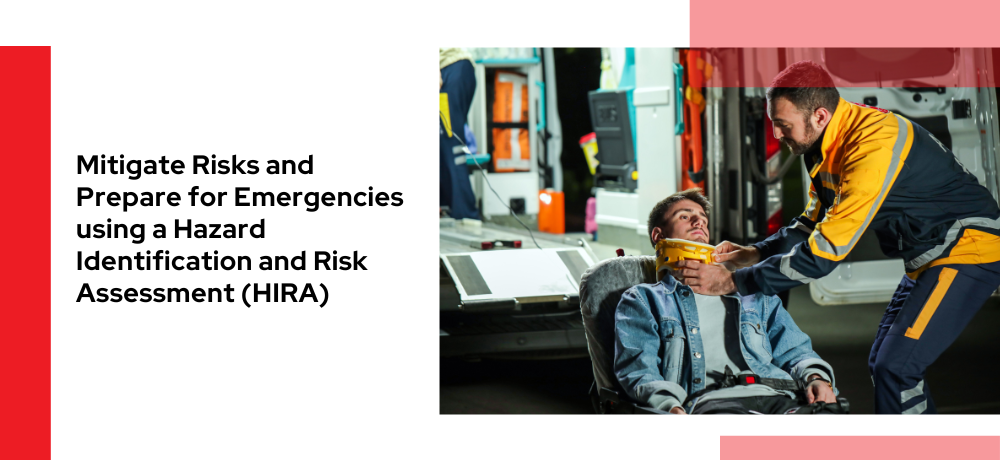Mitigate Risks and Prepare for Emergencies Using a Hazard Identification and Risk Assessment (HIRA)
Categories: Emergency Operations Centre , Emergency Planning , Emergency Preparedness

Natural and human-made emergencies can strike any organization at any time. Whether it's a pandemic, tornado, winter storm, cyber-attack, train derailment, fire, or an act of violence, the impact can be devastating if the organization is not adequately prepared. In this Blog, we will discuss how a Hazard Identification and Risk Assessment (HIRA) can help organizations identify their risks to better prepare for disasters.
What is Hazard Identification and Risk Assessment (HIRA)?
Hazard Identification and Risk Assessment (HIRA) is a systematic process used to identify and evaluate hazards and their associated risks. This process helps organizations understand their vulnerabilities, assess the likelihood of a hazard occurring, and estimate the potential impact of the hazard. With this information, organizations can prioritize their preparedness efforts and develop plans to mitigate risks. The HIRA is the foundation of the Emergency Management Program.
The HIRA process includes the following steps:
-
Identify hazards: The first step is identifying potential hazards that could impact the organization. This can include natural disasters, human-made disasters, and technological disasters. It should also include a comprehensive review of the organization's operations, facilities, and surrounding environment to identify potential secondary hazards.
-
Assess risks: Once hazards are identified, the next step is to assess the risks associated with each threat. This involves evaluating the likelihood of the hazard occurring and its potential impact on the organization. A risk matrix is used to assess risks and determine their priority.
-
Develop mitigation strategies: The next step is to develop mitigation strategies to reduce or eliminate the hazards that post the highest risk. This can include physical protections, enhancements or changes to the facilities or operations.
-
Implement preparedness activities: The final step is to implement preparedness activities to address the largest risks that may impact the organization. This can include developing risk-based emergency response plans, conducting emergency drills and exercises, implementing crisis communication plans, and providing training and education to staff and stakeholders.
Benefits of the HIRA process:
-
Proactive risk management: The HIRA process helps organizations take a proactive approach to risk management. By identifying potential hazards and assessing associated risks, organizations can take steps to reduce or eliminate risks before they occur.
-
Comprehensive planning: The HIRA process provides a comprehensive framework for disaster planning. This ensures that all aspects of the organization's operations are considered, and plans are developed to address potential risks.
-
Prioritized preparedness efforts: By evaluating risks and developing mitigation strategies, organizations can prioritize their preparedness efforts. This ensures that resources are allocated to the most significant risks, reducing the likelihood and impact of a disaster.
The HIRA process is the foundation of emergency management and is essential for any organization, regardless of size or industry.
At Get Ready, our HIRA process provides a comprehensive framework for emergency management, ensuring that organizations are proactive in identifying and managing the risks and are prepared to respond to disasters.
Get in touch with us today!
To learn more about the services we offer, please click here. To get in touch with us, please click here



